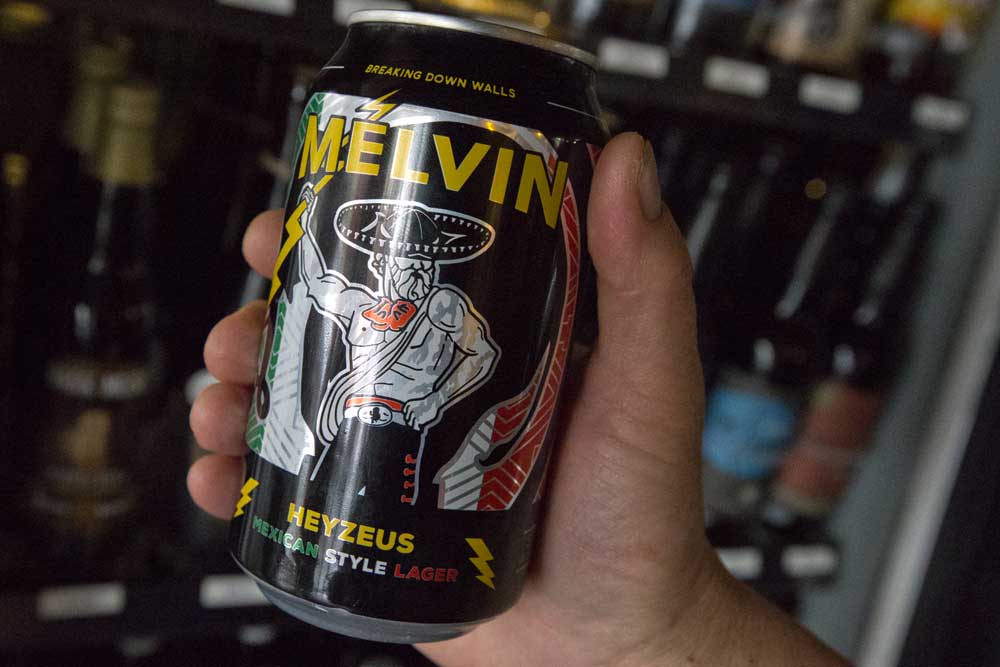Vienna lager, by way of Mexico
Published 12:00 am Thursday, March 1, 2018

- A beer enthusiast grabs a Melvin Brewing Heyzeus Mexican Style Lager at Broken Top Bottle Shop & Ale Cafe in Bend on Feb. 28, 2018. (Andy Tullis/Bulletin photo)
Each quarter the local homebrew club, Central Oregon Homebrewers Organization (COHO), conducts a competition for its members to brew beer according to a pre-chosen set of style guidelines. It’s an opportunity for brewers to learn about beer styles, practice brewing within those styles, and get judging feedback on their efforts.
The first club competition of the year just wrapped up, and as a member and the current president of COHO, I submitted a beer and judged other entries. As a result, I’ve had a particular style of beer on the mind recently.
Trending
The category chosen for this first competition of the year was what the Beer Judge Certification Program style guidelines call Amber Bitter European Beer. Of the three styles contained in this category, Vienna lager, Altbier and Kellerbier, I focused on Vienna lager to research and brew.
As the name indicates, this style originated in Vienna, Austria. In 1841, a young Austrian brewer named Anton Dreher introduced it, a pale amber-colored lager that was an immediate success in his native country. It was one of the world’s first clear, pale beers, introducing much of Europe to modern lagering techniques.
The key behind the beer’s color and success was Vienna malt, a newly developed, lightly kilned barley malt that provided the amber color and a toasty, rounded sweetness to the finished beer.
This malt was developed by Dreher himself, after learning about the English method of using hot air instead of direct-fired heat to make pale malts. The older direct-fired method tended to create darker malts with smoky character. The new technique allowed lighter colors and more delicate flavors to develop.
Vienna malt is commonly available today, often used by breweries to add color and a biscuit toastiness to beers without imparting any harsh or roast character.
Overall, the style is characterized as a clean, somewhat dry lager with bready-rich malt character and low floral hoppiness. It’s a moderate strength, easy drinking beer, with smooth and sweet toastiness.
Trending
“The best examples include restrained sulfur, low hopping rates, excellent clarity and an overall balance that leads to drinkability,” said Sunriver Brewing Company head brewer Brett Thomas via email. “When your glass is empty you should be looking for another one.”
Although immensely popular in Austria when it was introduced, the style all but disappeared in Europe within about six decades, in part supplanted by an even lighter, brighter beer — Czech Pilsner. However, the beer persevered in an unexpected location: Mexico.
In 1861, Napoleon III of France invaded Mexico, and installed Maximilian I from the Austrian Royal House as ruler of the Second Mexican Empire. Maximilian’s reign was short-lived, but during that time an influx of Austrian brewers brought the Vienna lager style to the country.
The Mexican-brewed style changed over time, particularly as the addition of adjunct cereals such as corn were added, but survived, and today you can still find examples in such well-known brands as Negra Modelo and Dos Equis. These mass-market lagers are lighter, sweeter than their Austrian counterparts of yesteryear, but still retain some of that original character.
In recent years, craft brewers have been returning to the style — the original and the Mexican offshoot. The best known American-brewed Vienna-style lager is the flagship from Boston Beer Company, Samuel Adams Boston Lager.
Boston Beer owner Jim Koch revived an old family recipe brewed by his great-great-grandfather when he introduced Boston Lager in 1984. This golden-amber colored brew presents with a slightly spicy hop aroma and a crisp maltiness in the flavor balanced with a clean hop bitterness. It’s a good beer to start with to get acquainted with the style.
Closer to home, pFriem Family Brewers in Hood River offers its Vienna Lager as a winter seasonal. Its version is crisp and nutty, with bread crust flavors and a slightly hoppier character that lingers into the aftertaste.
However, the “Mexican-style lager” has become more common among breweries in the past couple of years. Inspired in part by the popularity of Mexican import brands, and in part by craft brewers’ affinity for lagers, these beers strive to be clean, refreshing and easy drinking, while invoking their Austrian heritage.
Sunriver Brewing debuted its Mexican Lager last year, which proved popular and won a gold medal at the North American Beer Awards in June. The beer is returning later this month as a rotating year-round draft selection.
“We are big fans of pale and dark Mexican lager, as well as true Vienna lagers,” Thomas said. “We were inspired by the drinkability and refreshing qualities of beers like Pacifico, Bohemia and Modelo.
Our Mexican lager differs slightly from those modern interpretations as it is all malt-based (no adjuncts), and uses a higher quality of raw materials.”
Sunriver’s version is golden in color and provides a crisp, solid malt backbone and clean finish. Like the style that inspired it, it’s meant to be sessionable and easy-drinking. Don’t pass up the chance to try these historic Viennese-inspired beers if you see one on tap.
— Jon Abernathy is a Bend beer blogger and brew aficionado. His column appears every other week in GO!








